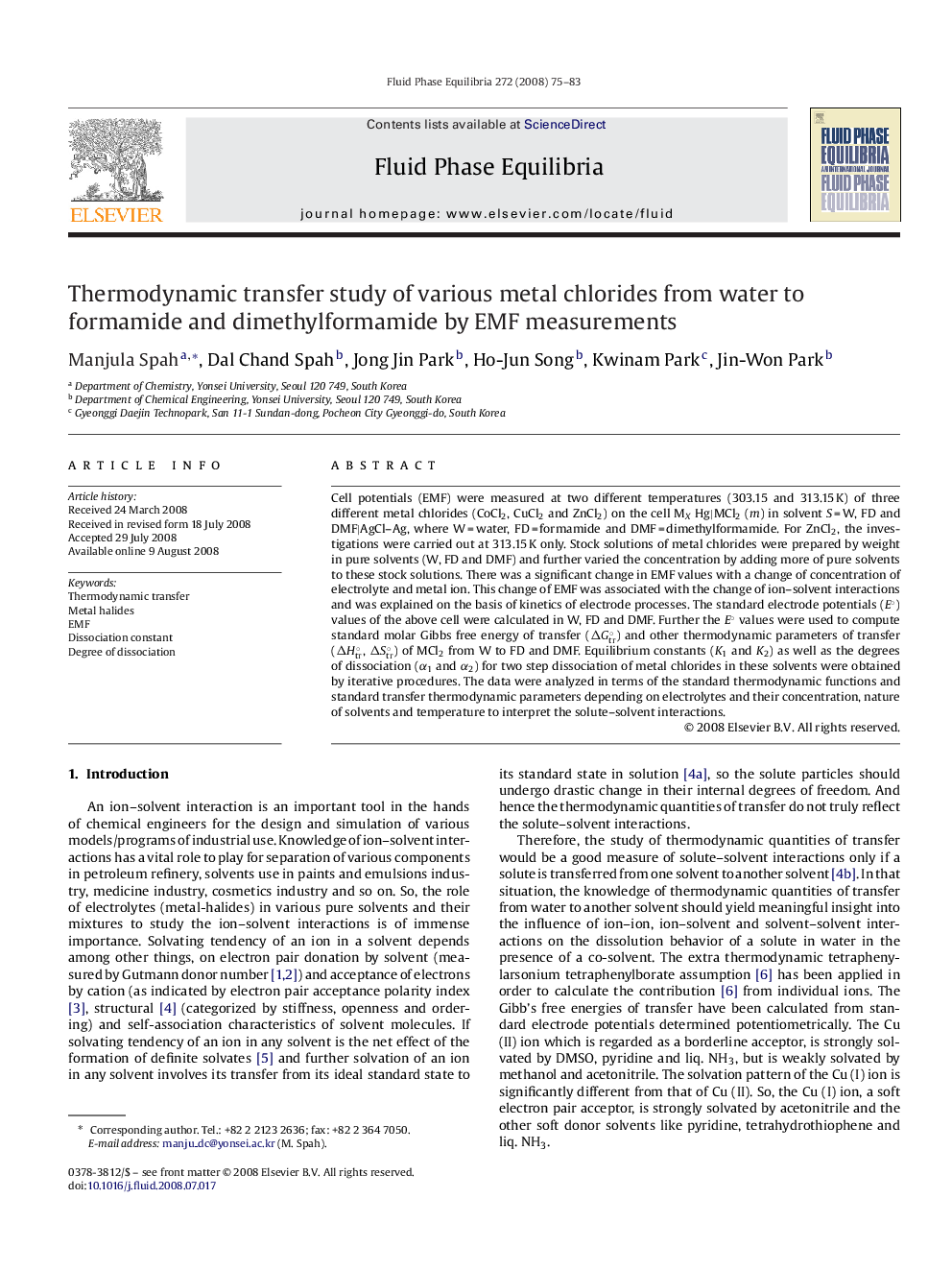| Article ID | Journal | Published Year | Pages | File Type |
|---|---|---|---|---|
| 203548 | Fluid Phase Equilibria | 2008 | 9 Pages |
Cell potentials (EMF) were measured at two different temperatures (303.15 and 313.15 K) of three different metal chlorides (CoCl2, CuCl2 and ZnCl2) on the cell MX Hg|MCl2 (m) in solvent S = W, FD and DMF|AgCl–Ag, where W = water, FD = formamide and DMF = dimethylformamide. For ZnCl2, the investigations were carried out at 313.15 K only. Stock solutions of metal chlorides were prepared by weight in pure solvents (W, FD and DMF) and further varied the concentration by adding more of pure solvents to these stock solutions. There was a significant change in EMF values with a change of concentration of electrolyte and metal ion. This change of EMF was associated with the change of ion–solvent interactions and was explained on the basis of kinetics of electrode processes. The standard electrode potentials (E°) values of the above cell were calculated in W, FD and DMF. Further the E ° values were used to compute standard molar Gibbs free energy of transfer (ΔGtr°) and other thermodynamic parameters of transfer (ΔHtr°, ΔStr°) of MCl2 from W to FD and DMF. Equilibrium constants (K1 and K2) as well as the degrees of dissociation (α1 and α2) for two step dissociation of metal chlorides in these solvents were obtained by iterative procedures. The data were analyzed in terms of the standard thermodynamic functions and standard transfer thermodynamic parameters depending on electrolytes and their concentration, nature of solvents and temperature to interpret the solute–solvent interactions.
